By: Kojiro Nishimiya, SIGHT IEEE Tokyo Section Chair
The 3rd IEEE SIGHT Hack Challenge was held at Nihon University on July 7th, 2018. This event was co-organized by SIGHT IEEE Tokyo Section, IEEE Tokyo Section Young Professionals Affinity Group, and Tokyo Section Keio University Student Branch.
The purpose of this event is to build up the skill to address problems of Japanese modern society by using cutting-edge technologies. In the first part of the event, participants learned about the basics of “Machine Learning” and its practical uses. After the lecture, they approached the challenge of writing a program using machine learning tools and developing an idea that addresses the issues in Japanese society.
The event finished successfully, and the total attendees summed up to 35 (including 21 IEEE members).
Date: July 7th, 2018
Place: Humanities and Science Campus, Nihon University, Tokyo, Japan
Speaker: Antonio Tejero-de-Pablos (The University of Tokyo)
[Technical Lecture and Exercise]
Dr. Antonio Tejero-de-Pablos (The University of Tokyo) gave a lecture about the fundamentals of machine learning and its practical uses. First, he explained about the general framework of machine learning, followed by an overview of the basic theory and algorithms. He also introduced state-of-the-art concepts of deep learning. In addition, he also presented a list of hot topics and practical results of the latest machine learning research works, such as image captioning or visual question answering. Last, he introduced “WebDNN”, which is a tool recently developed that allows developing machine learning applications to run in portable terminals (laptops, smartphones, etc.). This is a step forward towards the idea of ubiquitous AI.
While the lecturer explained about different techniques of machine learning, the participants were able to ask further details of the math behind each method, and how to tune parameters for higher accuracy, among other questions.
The participants tried to edit programs to solve machine learning problems by using a Jupyter notebook prepared by us. For this, we set up an AWS (Amazon web service) to run the programs without having to build each environment in each of the participants’ computer. We prepared three programs for the exercise: 1. classification of handwritten digits (MNIST) using scikit-learn, 2. classification of pictures (cifar10) using Tensorflow, 3. classification of data related to problems of Japanese society, humanitarian purposes, information on blood transfusers, patient data on heart disease and missing data on copper plate, using Tersorflow. Before starting the exercise, we gave a brief explanation on these programs. Then, the attendees ran a simple program in order to get used to the Jupyter environment and the Python code. Finally, the attendees modified our programs by themselves, and learned how to improve the results by modifying the prediction model.
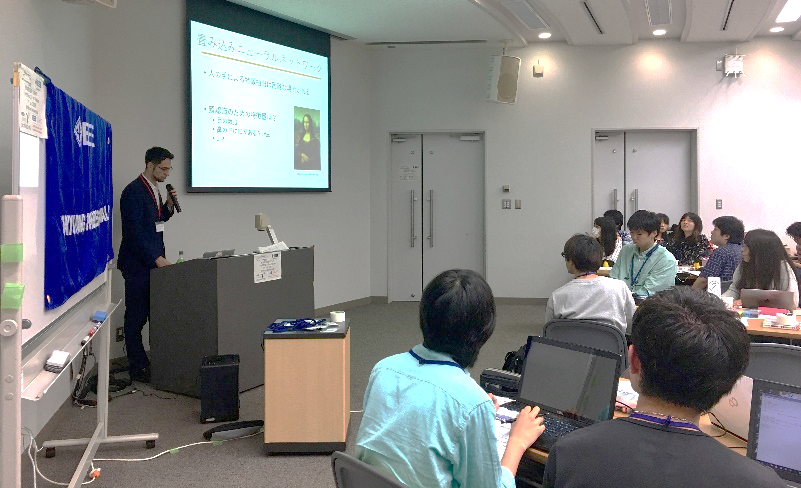
Lecture of Deep Learning

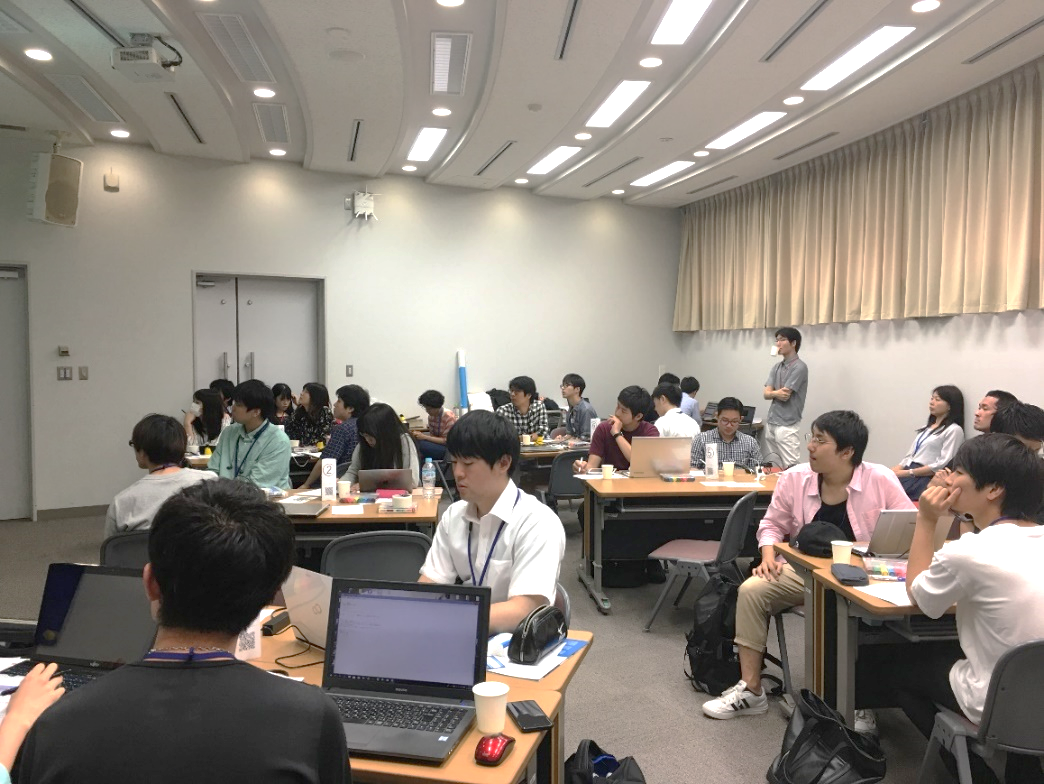
[Ideathon and Proposal]
The attendees thought about a problem of Japanese society they would like to solve using machine learning. Then, they shared their ideas based on the theme in a “speed storming” style. More concretely, attendees formed two circles (inside and outside) facing each other, and then the pairs inside circle and outside circle who are in front of each other discussed for 3 minutes. After that, they had time to take notes and the people outside circle rotated one person clockwise. Again, they shared their idea with a different person and the same task is repeated three times. The importance of this speed storming is to absorb the other people’s ideas in order to create more exciting ideas. After this session, we let the students refine their idea for 15 minutes (“idea sketch”). Then, the idea sketches were lined up on the table and all attendees evaluated them (“highlight method”). Finally, the seven ideas with the highest score were selected, and the creators presented and appealed their ideas. The other attendees joined one idea, and finally all participants got divided into 7 teams. After the teams were decided, the participants further developed their ideas into practical solutions useful for society. To finish this session, each team presented and shared their solution in front of everyone and got comments from the audience.
Some ideas were very helpful for the humanitarian activities. For example, one of those ideas was the “AI refrigerator”. The refrigerator can think and control functions on its own. Also, the refrigerator can consider the health condition of the owner, and so the refrigerator itself can order the appropriate foods, vegetables, etc. for the owner. This could apply for the elder people in the local areas. They have difficulties purchasing groceries by themselves because the supermarkets and shops are far from their house. Also, it’s difficult for the elderly to monitor consumption for health purposes on their own. Hence, if an AI refrigerator can consider their health condition, it can automatically order the appropriate foods and drinks, etc. and have those items delivered directly to their house. Another idea is “The tool of Health check from face”. If the health condition can be checked from the face using deep learning, this will be very helpful. Using a smart phone, we can check the daily health condition of a person. If the results can be sent to the doctor every day, we can find the sick or poor health in advance without going to the hospital. The local areas have few hospitals so this can be very helpful for the health check of people in the local areas.

Group discussion for the ideas for the solution of Japanese modern society problems 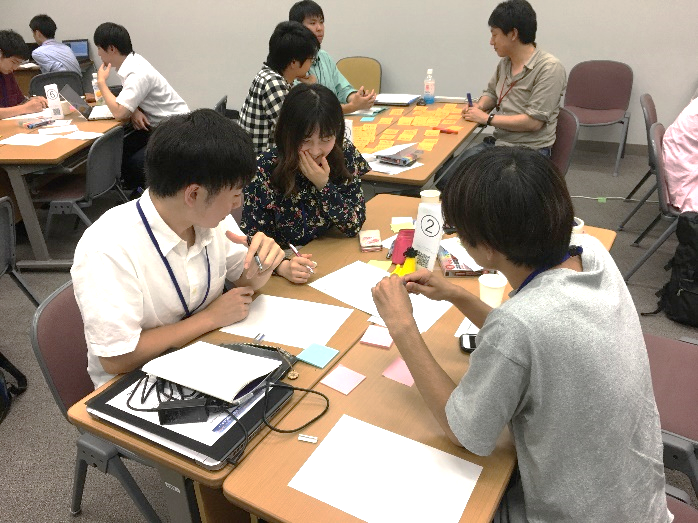
[Closing ceremony]
In the closing ceremony, the lecturer, Dr. Antonio Tejero-de-Pablos, delivered feedback on the workshop. The SIGHT Tokyo Chair, Kojiro Nishimiya, also commented from the humanitarian perspective. Some ideas proposed in this workshop were really valuable for addressing humanitarian issues in Japanese modern society problems. Therefore, we will try to keep these ideas for the implementation as actual projects. Also, since this is the first SIGHT activity ever organized in Japan, there was a general introduction on the program itself. Therefore, it’s very important to promote and encourage the SIGHT activity in various events in Japan.
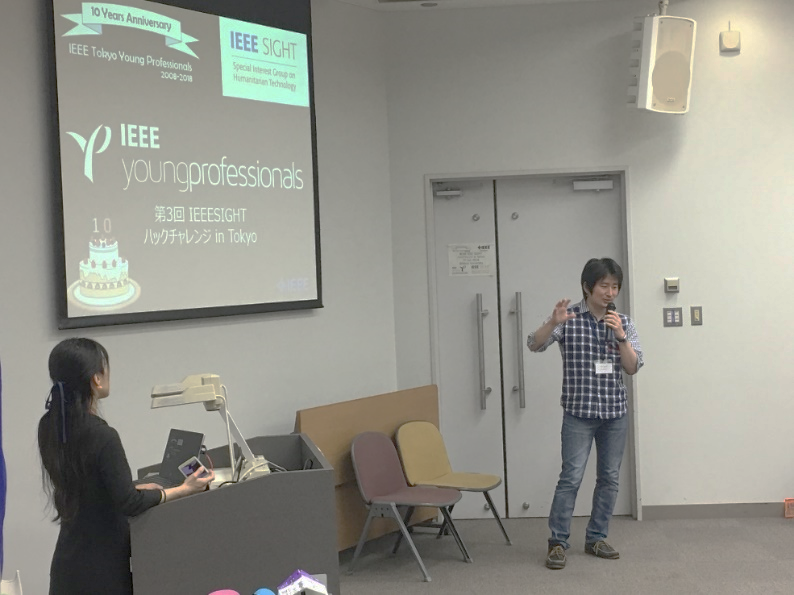
General introduction about SIGHT

Group photo after the event
After the Hackathon, we had an information sharing party with 23 attendees. We exchanged information about their research issues and today’s comments with each other followed with a tasty dinner and drinks. Moreover, the attendees enjoyed talking about many topics, such as, a future of machine learning and AI, career development, benefits of joining IEEE, and the humanitarian activities. All of these discussions were exciting. The networking party also provided a good opportunity for students to interact with engineers who already work in the industry.
We are going to continue this project using the other various cutting edge technologies for the solution of Japanese modern society problems.
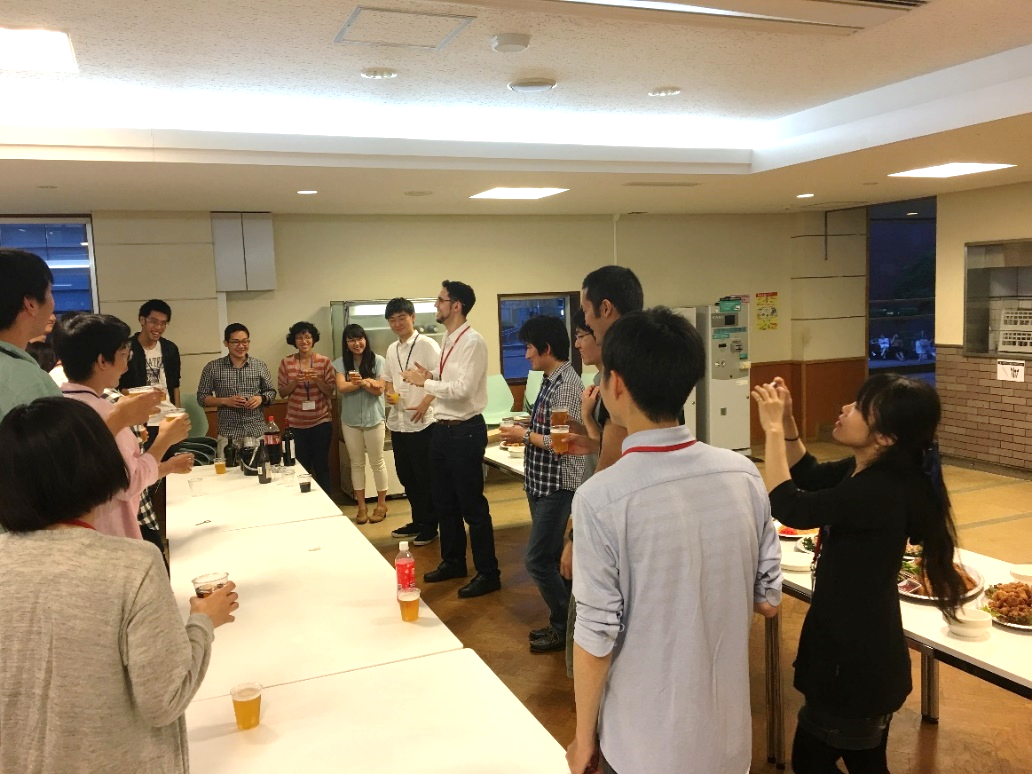
Information sharing party

